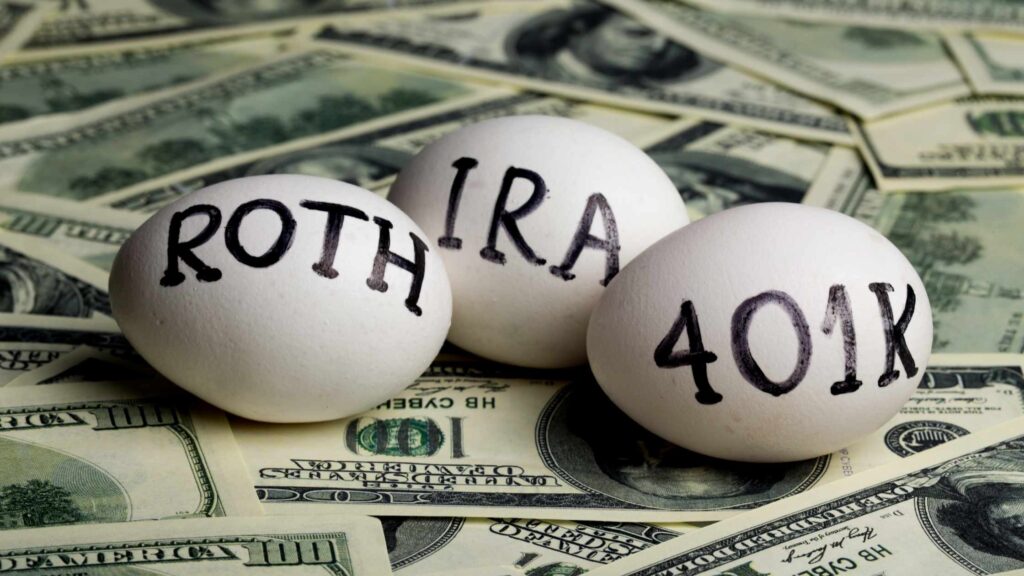Introduction
Retirement planning is a crucial aspect of personal finance. As you start thinking about your retirement goals, it’s important to understand the different retirement account options available to you. This article will provide a comprehensive guide to navigating various retirement accounts, including 401(k), IRA, Roth IRA, and more.
Understanding 401(k) Accounts
What is a 401(k) Account?
A 401(k) account is an employer-sponsored retirement plan where employees can contribute a portion of their income on a pre-tax basis. These contributions are invested in a range of investment options, typically selected from a menu provided by the employer.
Benefits of a 401(k) Account
- Employer Match: Many employers offer a match on employee contributions, which is essentially free money. It’s a significant benefit that can boost your retirement savings.
- Tax Advantages: Contributions to a traditional 401(k) account are tax-deductible, reducing your taxable income for the year. Additionally, earnings on your investments grow tax-deferred until withdrawal.
- Higher Contribution Limits: The IRS sets annual contribution limits for 401(k) accounts, allowing you to save more towards retirement compared to other retirement accounts.
Considerations for 401(k) Accounts
- Vesting Schedule: Employer matching contributions may require a specific period of service before becoming fully vested. It’s essential to understand your employer’s vesting schedule to avoid losing any matched funds.
- Limited Investment Options: While 401(k) accounts offer investment options, the choices are typically predetermined by the employer. Be sure to evaluate these options and consider diversifying your investments through other retirement accounts.
Exploring Individual Retirement Accounts (IRAs)
What is an IRA?
An Individual Retirement Account (IRA) is a personal retirement account that allows individuals to contribute money towards their retirement on a tax-advantaged basis. Unlike a 401(k), an IRA is not employer-sponsored and can be opened by anyone who has earned income.
Types of IRAs
- Traditional IRA: Contributions to a traditional IRA are generally tax-deductible, and earnings grow tax-deferred until withdrawal. Withdrawals during retirement are taxed as ordinary income.
- Roth IRA: Contributions to a Roth IRA are made with after-tax dollars, meaning they are not tax-deductible. However, qualified withdrawals during retirement are entirely tax-free, including earnings.
Benefits of IRAs
- Flexibility: IRAs offer a wide range of investment choices, including stocks, bonds, mutual funds, and more. This flexibility allows you to tailor your investments to your specific retirement goals and risk tolerance.
- Control: Unlike a 401(k), which is subject to your employer’s plan rules, an IRA gives you complete control over your investments and allows for more personalized retirement planning.
Considerations for IRAs
- Contribution Limits: IRAs have annual contribution limits set by the IRS. It’s crucial to understand these limits and contribute consistently to maximize your retirement savings.
- Income Restrictions: High-income individuals may face limitations on their ability to contribute to a traditional IRA or convert a traditional IRA to a Roth IRA. Consult with a financial advisor to determine eligibility and explore alternative options.
Exploring Roth IRAs
What is a Roth IRA?
A Roth IRA is a retirement account that offers attractive tax benefits. Contributions to a Roth IRA are made with after-tax dollars, but qualified withdrawals during retirement are entirely tax-free.
Benefits of Roth IRAs
- Tax-Free Withdrawals: Qualified withdrawals from a Roth IRA, including earnings, are entirely tax-free. This benefit can potentially save you a significant amount of money during retirement.
- No Required Minimum Distributions (RMDs): Unlike traditional retirement accounts like 401(k)s and traditional IRAs, Roth IRAs do not have required minimum distributions (RMDs) during the account owner’s lifetime. This allows for greater flexibility in retirement planning.
Considerations for Roth IRAs
- Income Eligibility: Roth IRAs have income limits that determine eligibility for contributions. However, there are techniques, such as backdoor Roth contributions, that high-income individuals can use to contribute to a Roth IRA.
- Pre-Tax vs. After-Tax Contributions: Deciding between traditional retirement accounts and Roth IRAs involves considering your current and future tax situation. Consult with a financial advisor to evaluate the best option for your individual circumstances.
Additional Retirement Account Options
Simplified Employee Pension (SEP) IRA
A SEP IRA is a retirement account option for self-employed individuals and small business owners. It allows for tax-deductible contributions and follows similar rules to traditional IRAs.
Solo 401(k) or Individual 401(k)
Solo 401(k) plans are designed for self-employed individuals or business owners with no employees, other than a spouse. They offer higher contribution limits and similar tax advantages to traditional 401(k) accounts.
Summary
Navigating different retirement accounts is crucial when planning for your future. Understanding the benefits and considerations of each type, including 401(k)s, IRAs, and Roth IRAs, empowers you to make informed decisions. Remember to evaluate contribution limits, tax advantages, investment options, and your personal financial situation. Seek advice from a financial advisor to create a retirement strategy that aligns with your goals and objectives.







